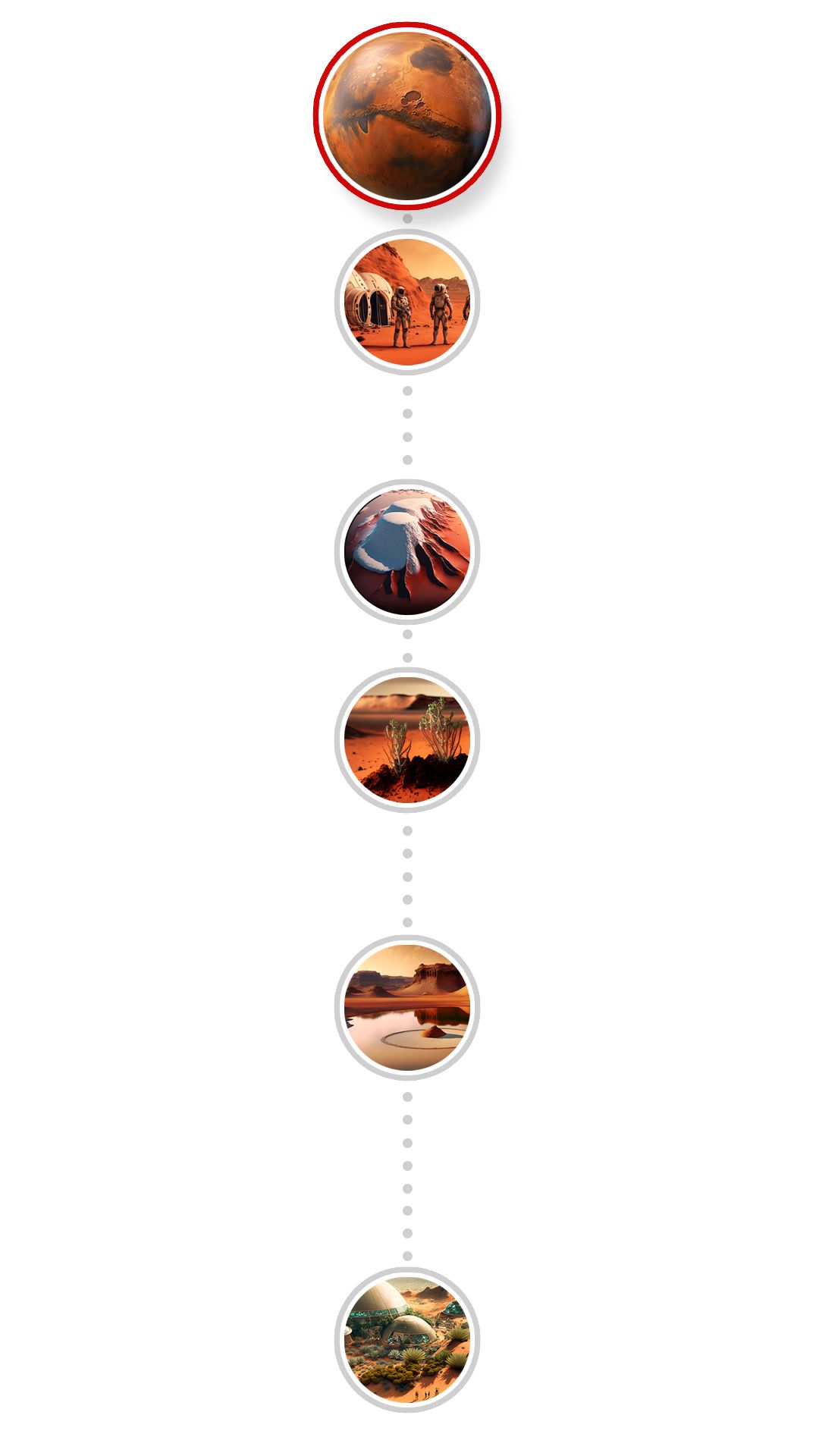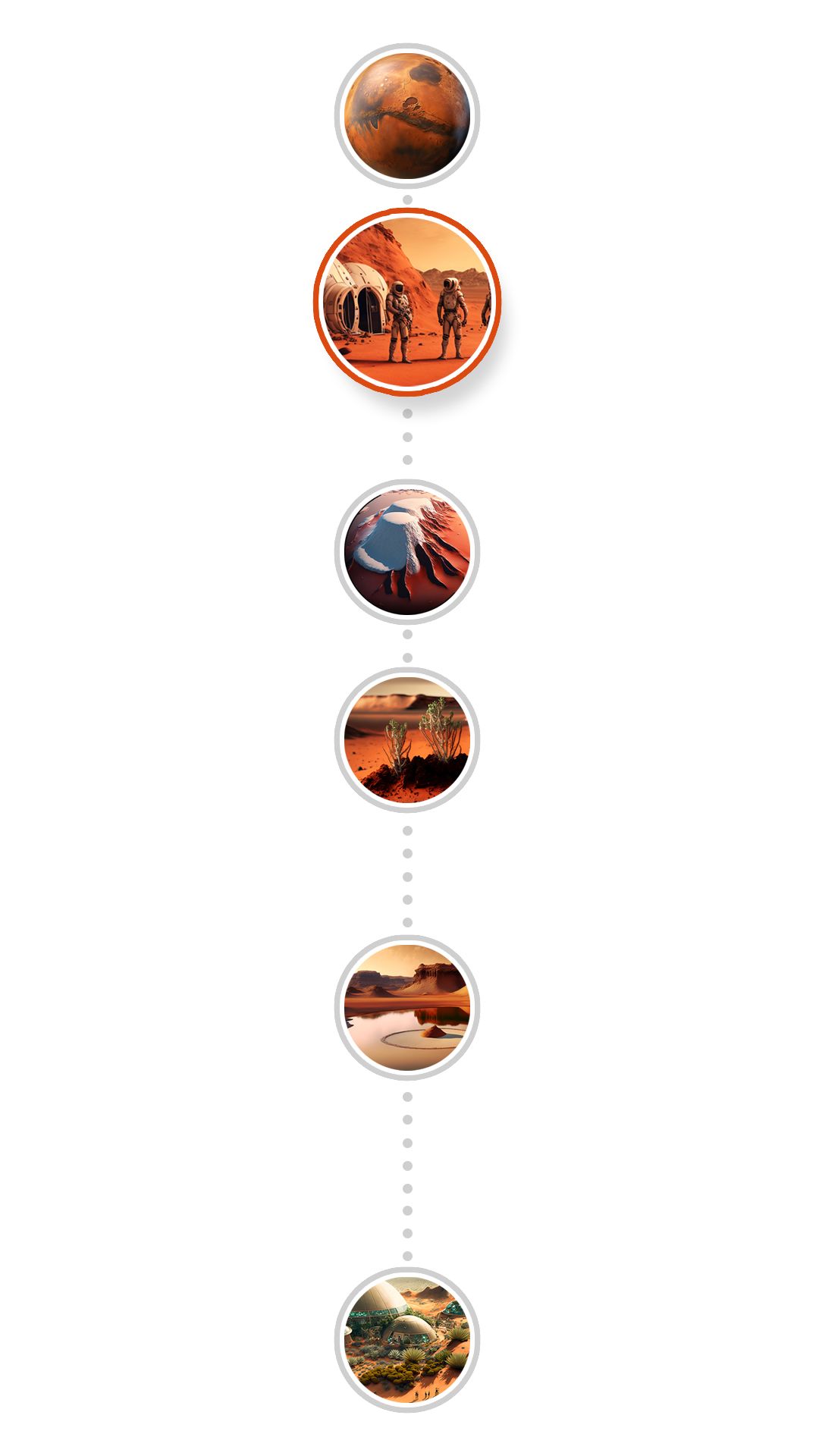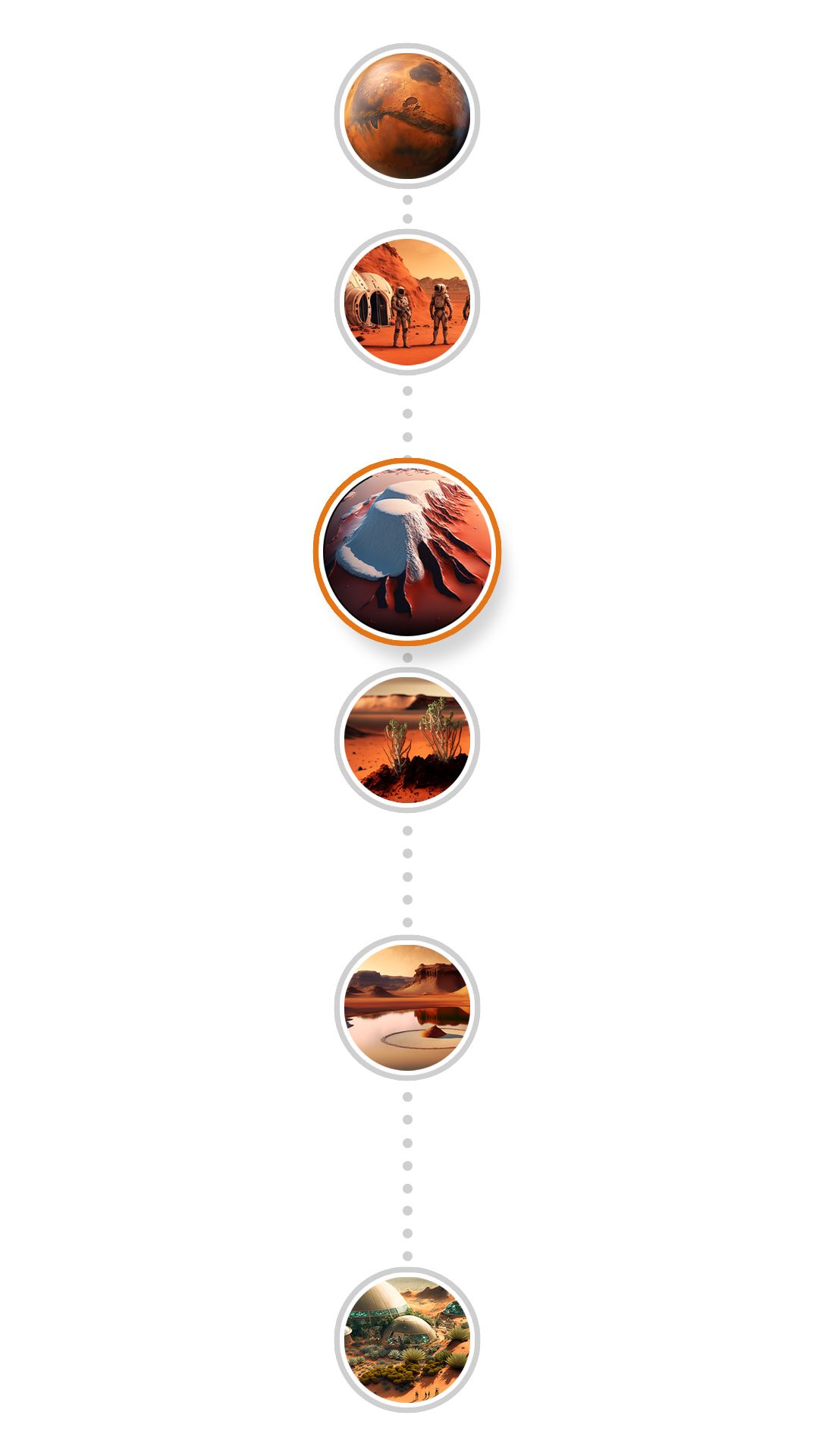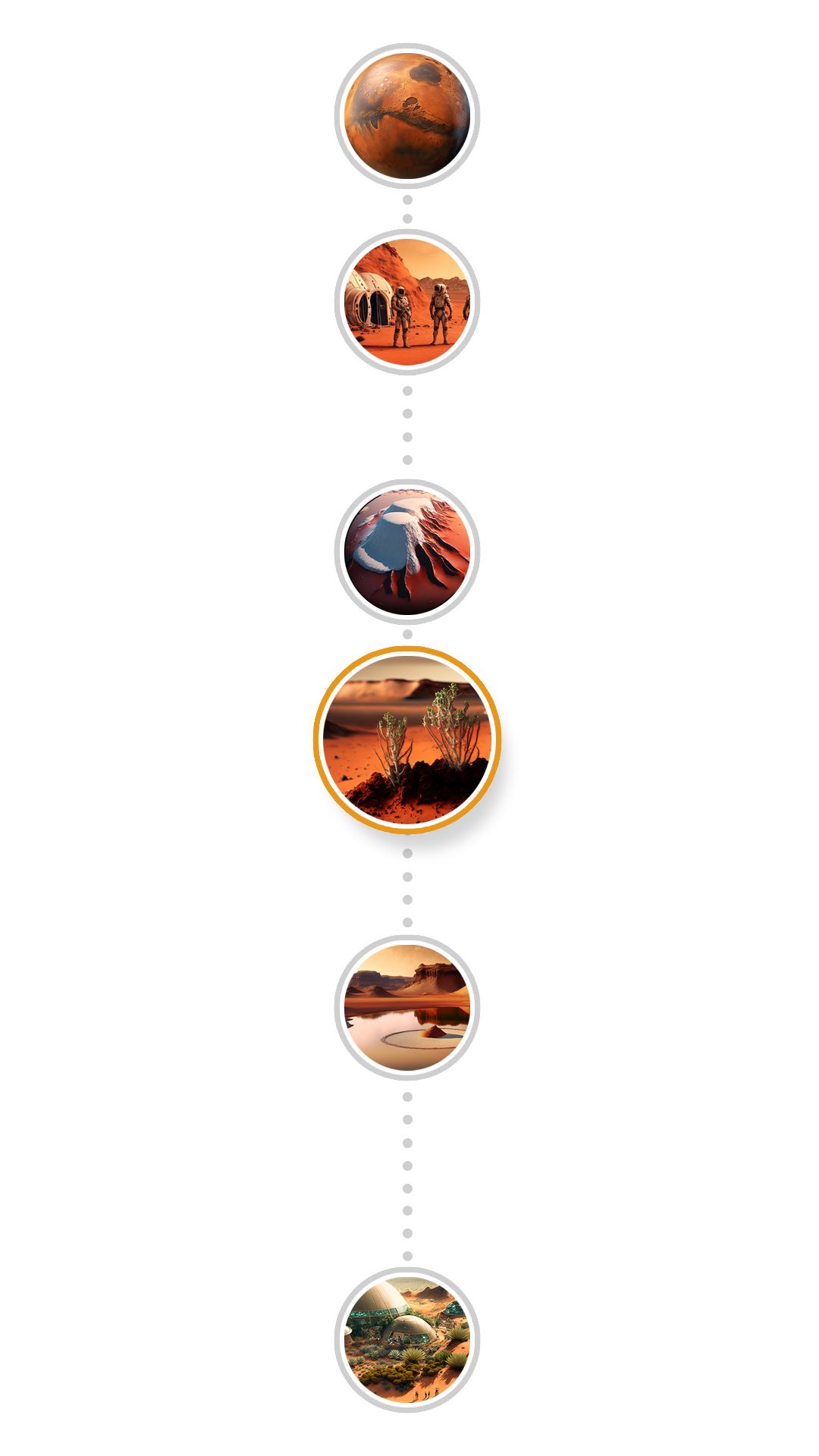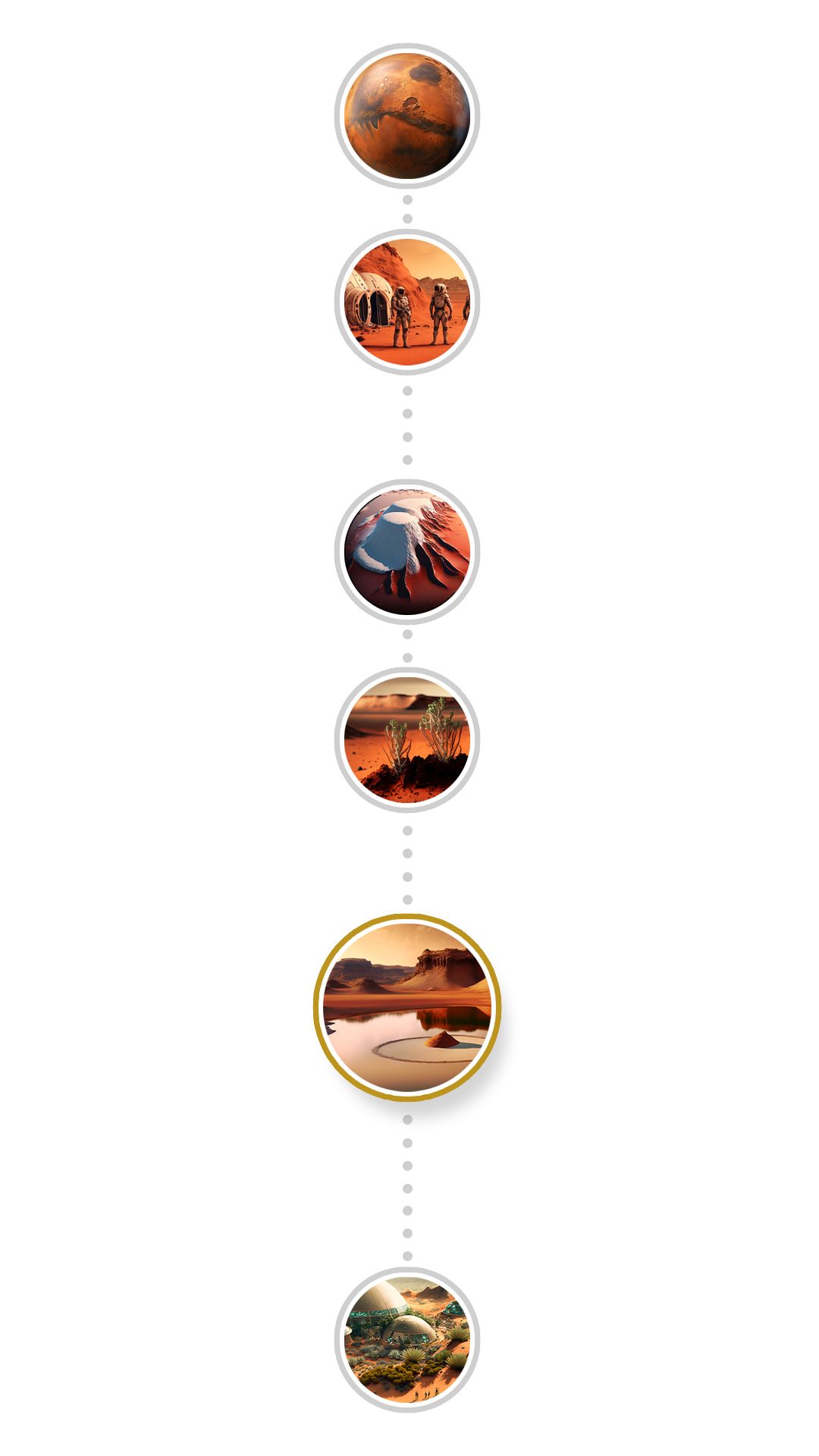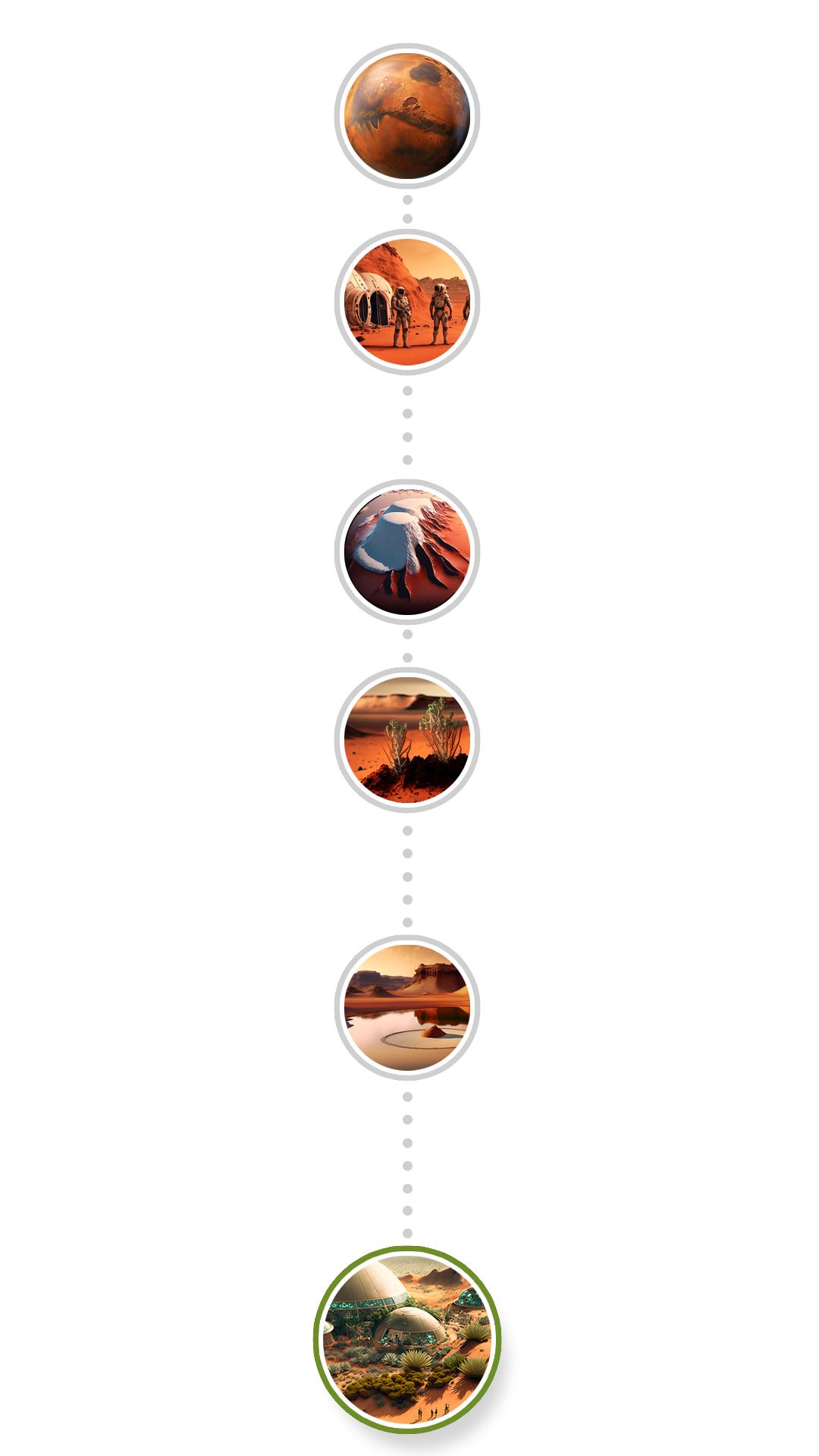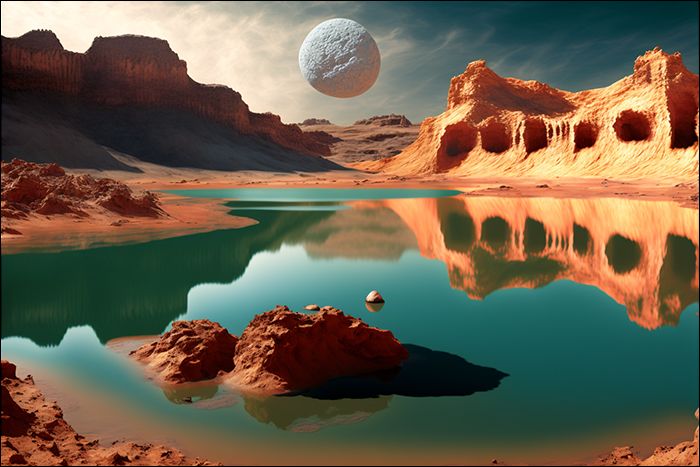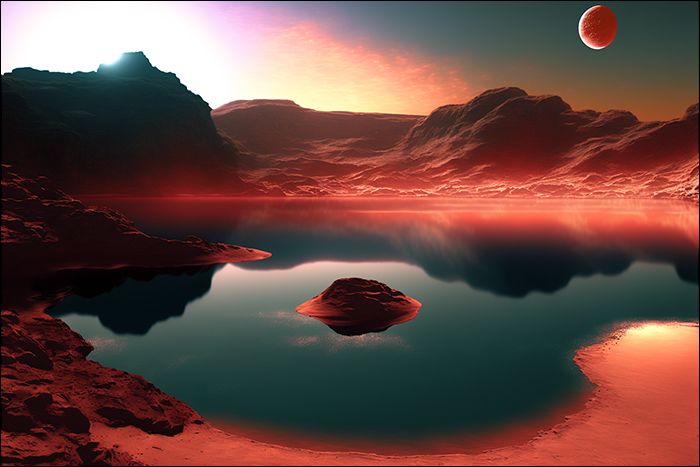Timelines
One sequence. Many possibilities

Time flies like an arrow.
Fruit flies like a banana.
Almost any event can be meaningfully summarised with a timeline.
Time, like an arrow, tends to travel in only one direction. There are, however, many ways to represent the passage of time (and in Shorthand it's possible to step backwards through time, too). Let's take a look at just a few possibilities of representing events through time here.
Consider this template not an example of a single story, but as a showcase of techniques for acheiving a single outcome: a timeline.
Shorthand sections can be used individually or in combination for the presentation of timeline, and depending on your content and intent, one method may be more suitable than another. In any instance it's up to you how to style the line (if there is one), the individual points or segments of the line, and how accurately you wish to portray different lengths of time or importance of the elements.
Let's get to some examples.
A Scrollmation section
A Scrollmation section includes one column for text and one for a sequence of images (on narrow screens, the top portion of the screen will show the image sequence while the text scrolls beneath).
With multiple image frames and slight changes between them, it is relatively easy to add some animation to your explanation. Changes could include highlights, dates, size increases or more.
Here's a Scrollmation timeline:
Initial exploration and assessment of Mars
2030
In this phase, we would send robotic missions to Mars to gather data about the planet's surface, climate, and resources. This would help us understand the challenges and opportunities that we would face in attempting to terraform the planet.
This phase is already underway, and we have been sending robotic missions to Mars for decades. The first human mission to Mars is currently being planned for the 2030s.
Establishing a human presence on Mars
2050
Before we can start terraforming the planet, we would need to establish a human settlement on Mars. This would involve building habitats and other infrastructure to support human life. If all goes well, humans could establish a permanent settlement on Mars in the 2040s or 2050s.
Melting the polar ice caps
2150
One of the first steps in terraforming Mars would be to increase the planet's temperature and atmospheric pressure. One way to do this would be to melt the polar ice caps, which are thought to contain large reserves of water ice. The resulting increase in atmospheric humidity would create a greenhouse effect, warming the planet.
This process would likely take many decades or even centuries to complete, depending on the method used and the amount of energy required.
Introducing oxygen-producing plants
2100 - 2200
Once the planet's temperature and atmospheric pressure are more suitable for life, we could introduce oxygen-producing plants, such as algae or cyanobacteria, to the Martian surface. These organisms would produce oxygen as a byproduct of photosynthesis, slowly increasing the amount of oxygen in the planet's atmosphere.
This could potentially happen within a few decades of establishing a human settlement on Mars, as long as the planet's temperature and atmospheric pressure are suitable for plant growth.
Establishing a hydrosphere
2200 - 2300
Another key step in terraforming Mars would be to create a stable water cycle on the planet. This could involve transporting water from the polar ice caps or from other sources, such as comets or asteroids, and distributing it across the surface.
Like melting the polar ice caps, this process would likely take many decades or even centuries to complete, depending on the method used and the amount of water available.
Creating a stable ecosystem
2500 - 2600
Once we have established a human settlement on Mars, introduced oxygen-producing plants, built a magnetosphere, and established a stable water cycle, we can start introducing other forms of life to the planet. This could include animals, microbes, and other organisms that can help create a stable ecosystem.
This is the ultimate goal of terraforming, and it would likely take many centuries or even millennia to achieve. Once a stable ecosystem has been established, it is possible that Mars could eventually become a second home for humanity.
Reveal section with text
Show a different full-screen image for each step in your timeline and include as much or as little text as is required to explain each step.
With a Reveal section each image can have its own text column, so it's easy to ensure that your readers will always see text paired with the 'right' image, regardless of the length of the text or whether each point has a similar text length. Even if one of your timeline points has a single line of text and another has many paragraphs, the image will stay on screen for as long as is necessary for all of its text to be read.
Here's a timeline in a Reveal section:

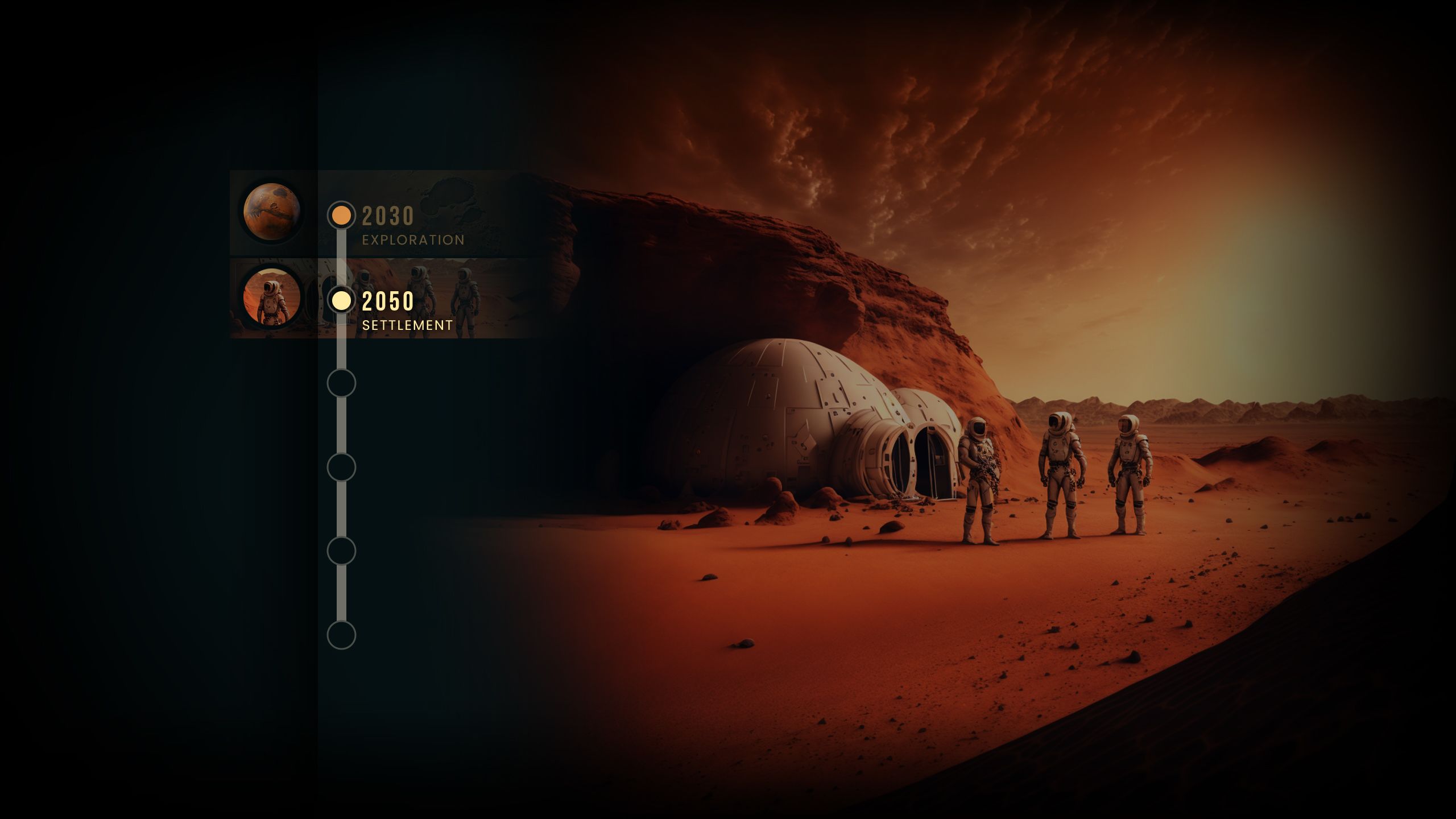
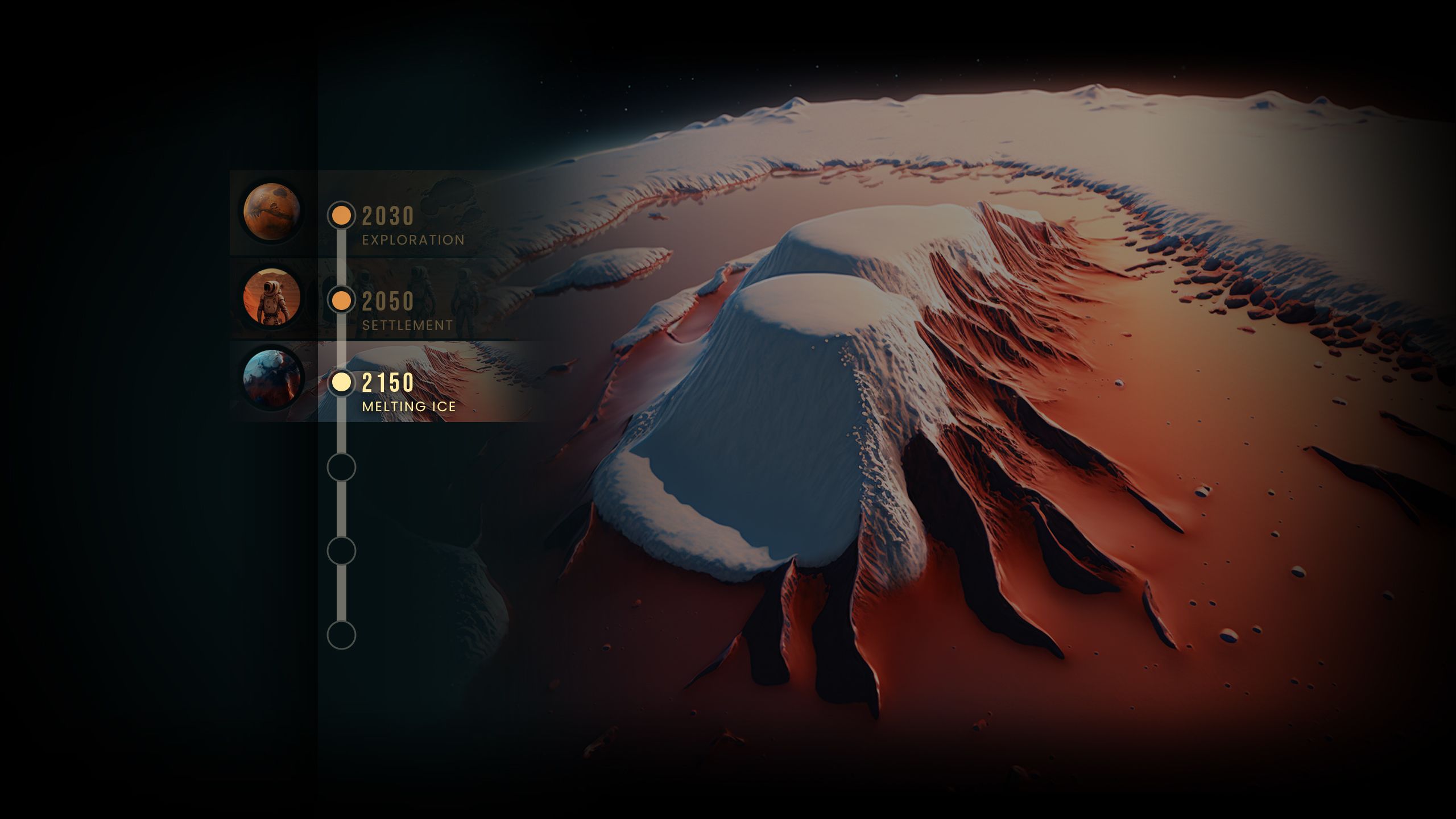
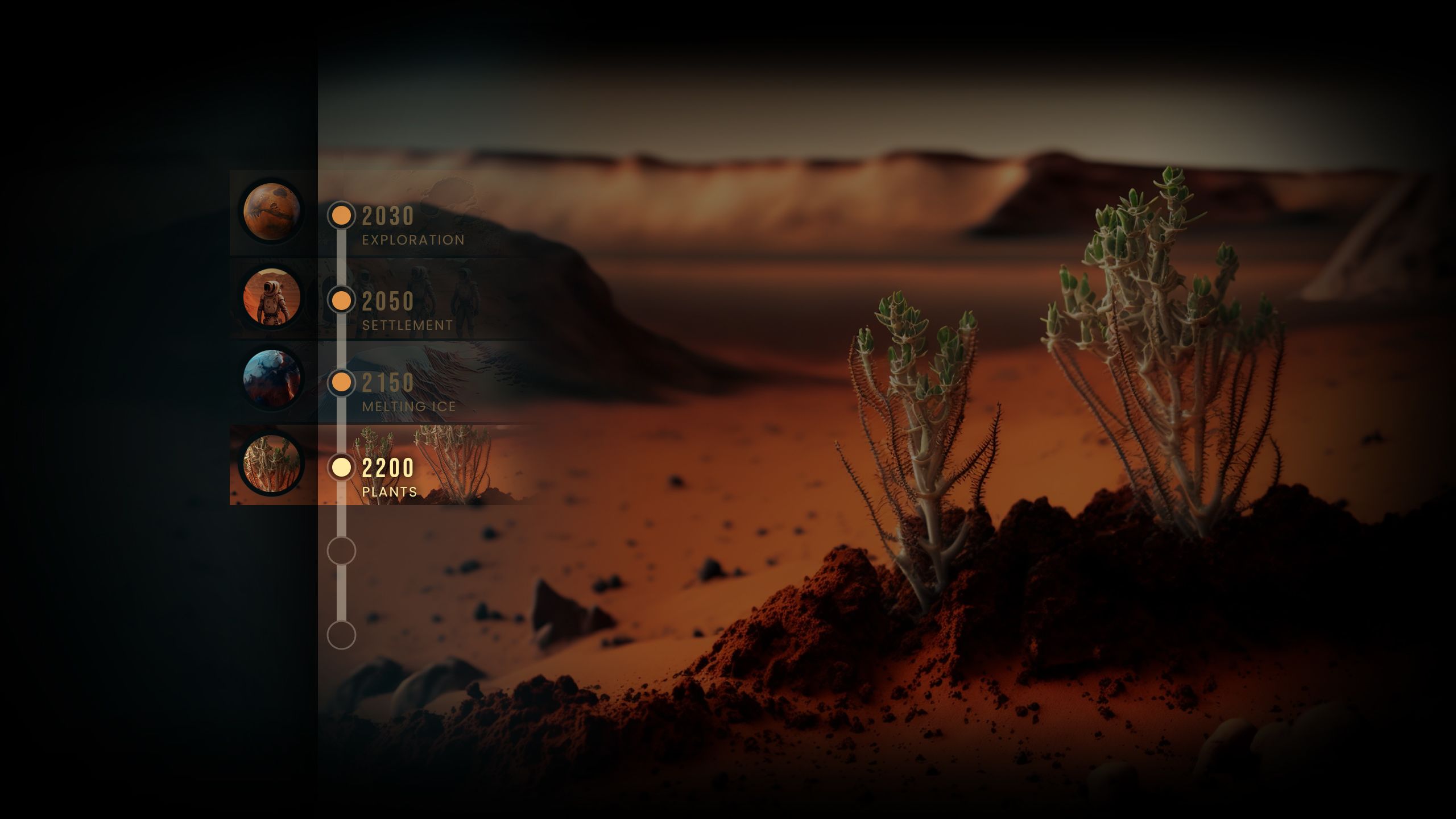
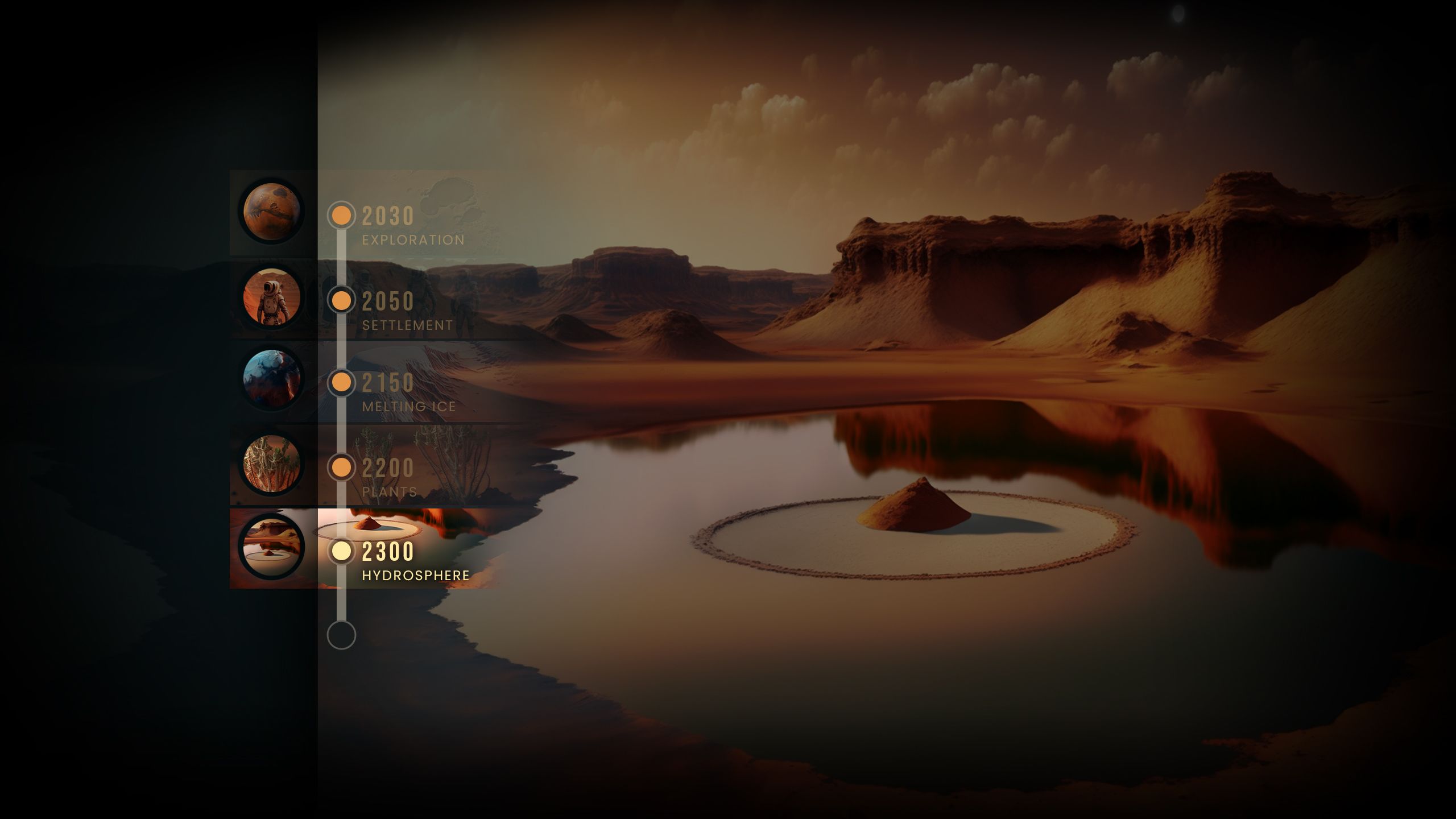
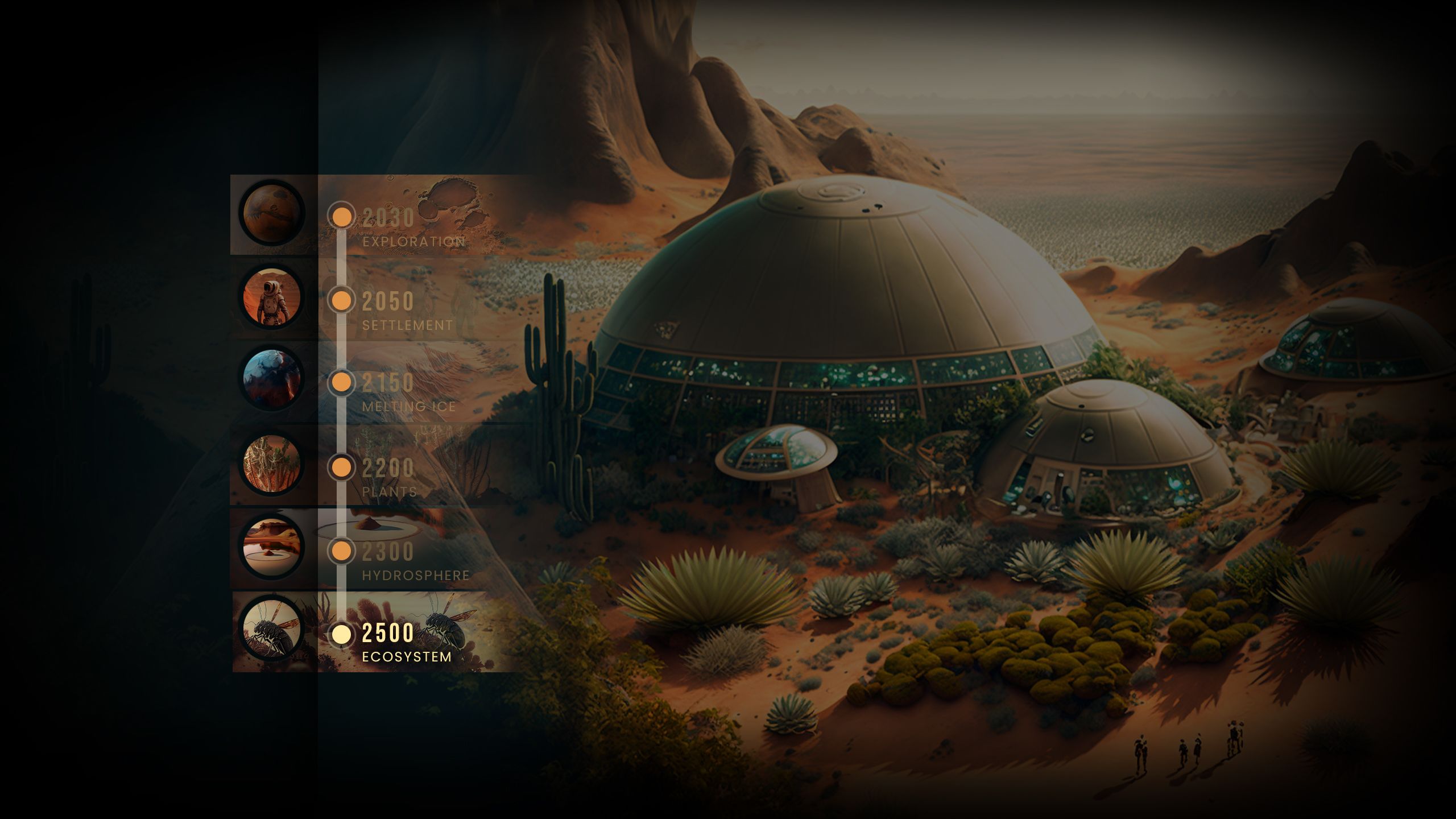
Initial exploration and assessment of Mars
This phase is already underway, and we have been sending robotic missions to Mars for decades. The first human mission to Mars is currently being planned for the 2030s.
Establishing a human presence on Mars
If all goes well, humans could establish a permanent settlement on Mars in the 2040s or 2050s.
Melting the polar ice caps
This process would likely take many decades or even centuries to complete, depending on the method used and the amount of energy required.
Introducing oxygen-producing plants
This could potentially happen within a few decades of establishing a human settlement on Mars, as long as the planet's temperature and atmospheric pressure are suitable for plant growth.
Establishing a hydrosphere
Like melting the polar ice caps, this process would likely take many decades or even centuries to complete, depending on the method used and the amount of water available.
Creating a stable ecosystem
This is the ultimate goal of terraforming, and it would likely take many centuries or even millennia to achieve. Once a stable ecosystem has been established, it is possible that Mars could eventually become a second home for humanity.
Adding transitions to a Reveal section
Reveal sections allow for a choice of transition effects between each image. Depending on the orientation of your timeline, a vertical or horizontal wipe effect added between your images may enhance the effect of the timeline 'growing' to accommodate each new event or period.
Here's another Reveal section, this time with a horizontal transition effect used on a horizontal timeline:



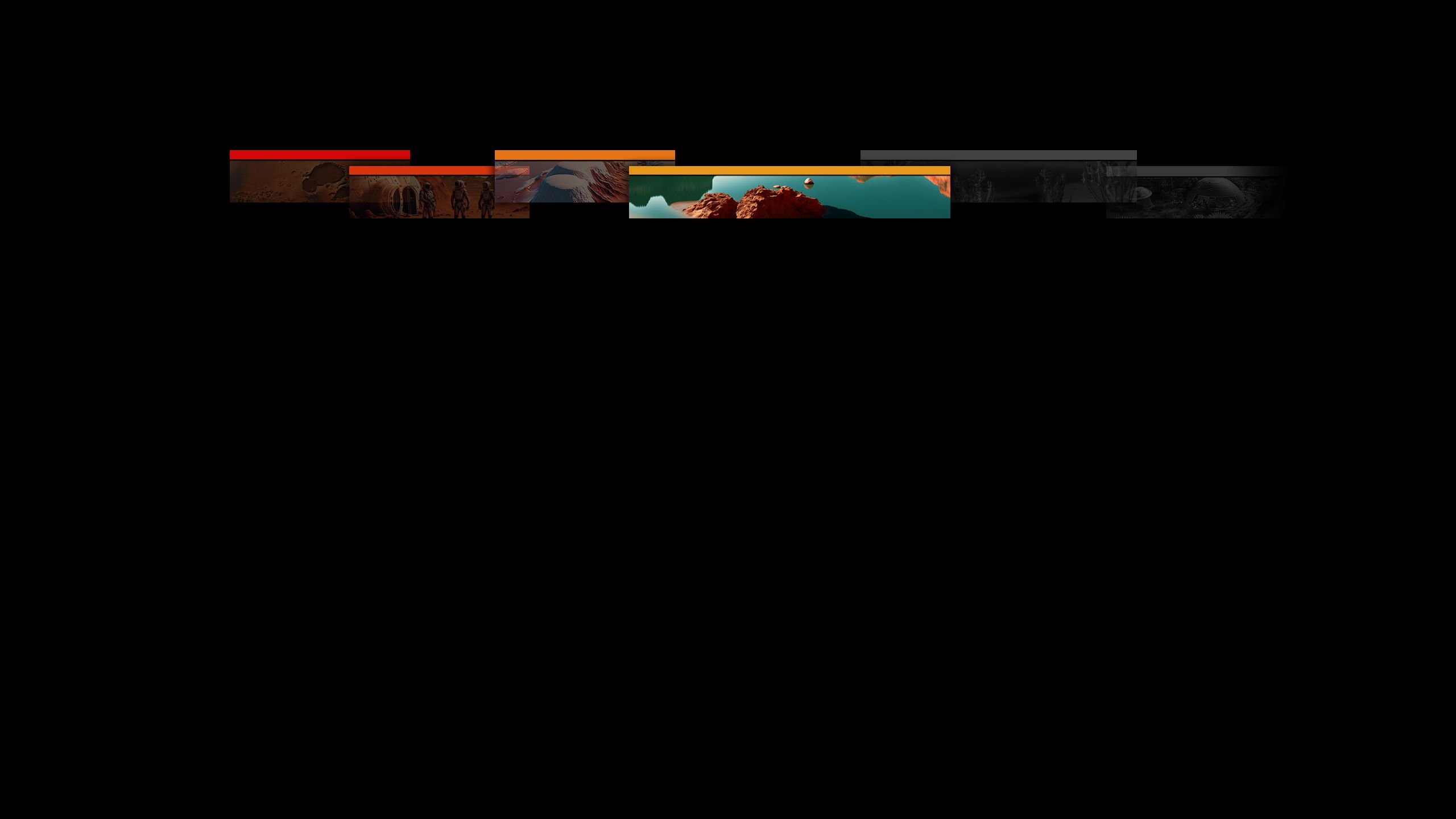
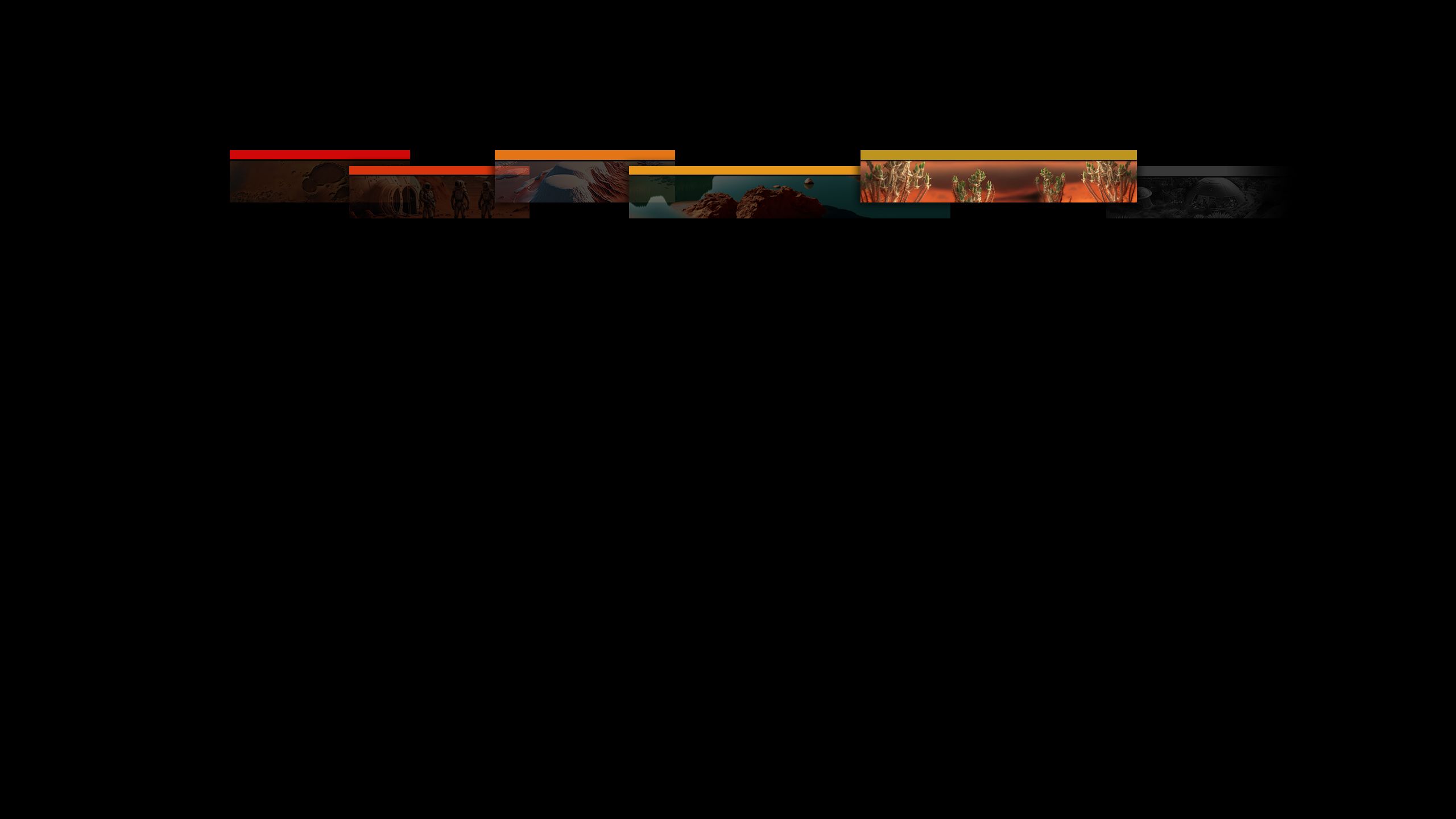
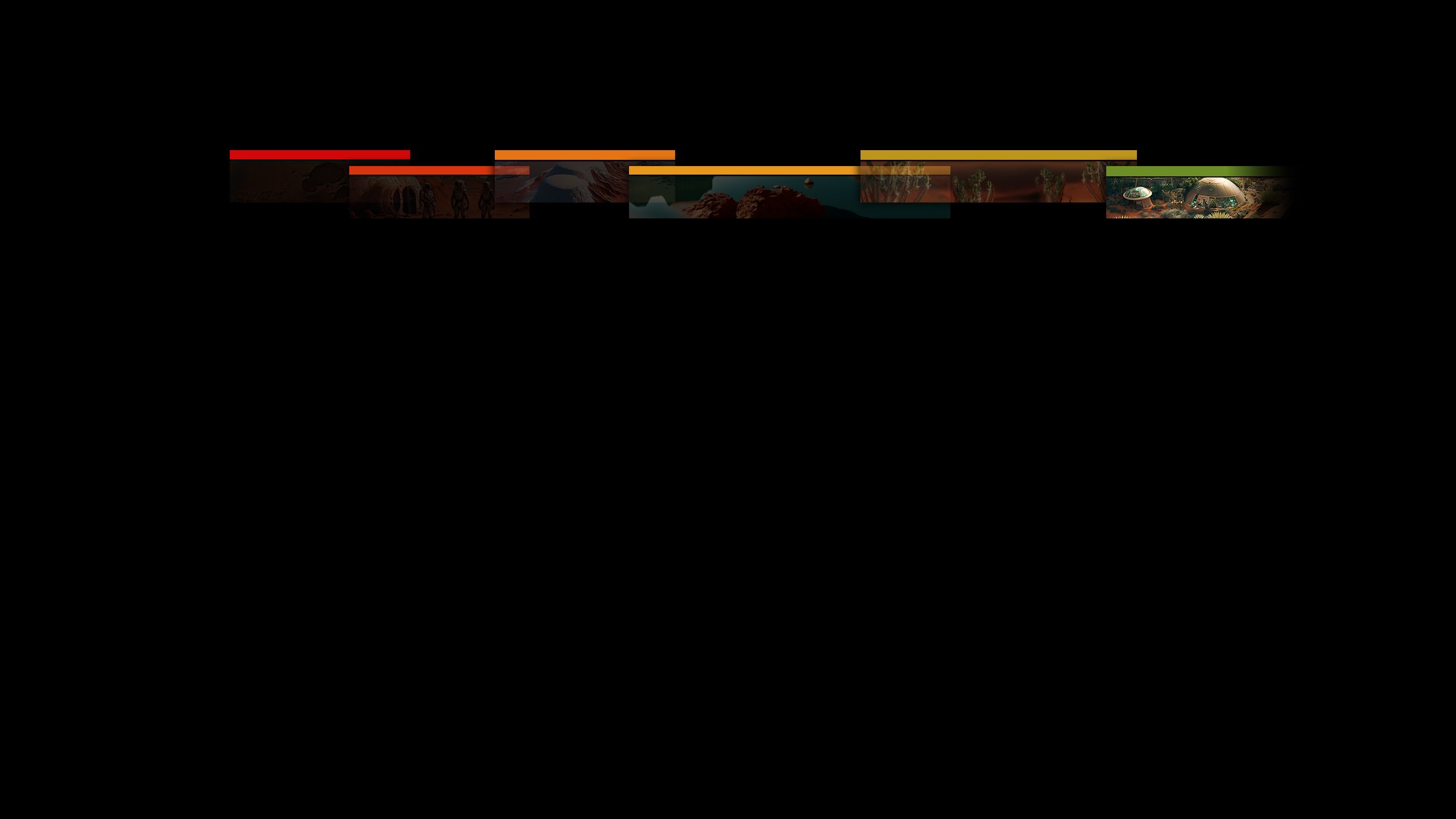
2030 - 2060
Exploration & assessment
In this phase, we would send robotic missions to Mars to gather data about the planet's surface, climate, and resources. This would help us understand the challenges and opportunities that we would face in attempting to terraform the planet.
This phase is already underway, and we have been sending robotic missions to Mars for decades. The first human mission to Mars is currently being planned for the 2030s.
2040 - 2060
Establishing human presence
Before we can start terraforming the planet, we would need to establish a human settlement on Mars.
This would involve building habitats and other infrastructure to support human life. If all goes well, humans could establish a permanent settlement on Mars in the 2040s or 2050s.
2050 - 2150
Melting polar ice caps
One of the first steps in terraforming Mars would be to increase the planet's temperature and atmospheric pressure. One way to do this would be to melt the polar ice caps, which are thought to contain large reserves of water ice. The resulting increase in atmospheric humidity would create a greenhouse effect, warming the planet.
This process would likely take many decades or even centuries to complete, depending on the method used and the amount of energy required.
2100 - 2250
Establishing a hydrosphere
Another key step in terraforming Mars would be to create a stable water cycle on the planet. This could involve transporting water from the polar ice caps or from other sources, such as comets or asteroids, and distributing it across the surface.
Like melting the polar ice caps, this process would likely take many decades or even centuries to complete, depending on the method used and the amount of water available.
2050 - 2300
Introducing oxygen-producing plants
Once the planet's temperature and atmospheric pressure are more suitable for life, we could introduce oxygen-producing plants, such as algae or cyanobacteria, to the Martian surface. These organisms would produce oxygen as a byproduct of photosynthesis, slowly increasing the amount of oxygen in the planet's atmosphere.
This could potentially happen within a few decades of establishing a human settlement on Mars, as long as the planet's temperature and atmospheric pressure are suitable for plant growth.
2250 - 2600
Creating a stable ecosystem
Once we have established a human settlement on Mars, introduced oxygen-producing plants, built a magnetosphere, and established a stable water cycle, we can start introducing other forms of life to the planet. This could include animals, microbes, and other organisms that can help create a stable ecosystem.
This is the ultimate goal of terraforming, and it would likely take many centuries or even millennia to achieve. Once a stable ecosystem has been established, it is possible that Mars could eventually become a second home for humanity.
Scrollpoints section
Let's add some movement.
With a Scrollpoints section, rather than using multiple images to create frame-based animation, only a single large image of the timeline shows all the steps. The image can then be set to zoom in to focus on individual steps or passages of time. Each of these scroll points can include text for an explanation. The length of text associated with each point can be as long or short as is necessary, and the image won't scroll to the next point until the text for the previous point has scrolled off screen.
Arrange the timeline horizontally, vertically, or along a meandering path, and add as many or as few points as you wish.
TIP: If you use this technique yourself and want to maintain a consistent zoom level and/or axis of movement: create your first scroll point and then duplicate and move it for the next point (rather than drawing new highlights for each point). Duplicating points will maintain zoom and position, whereas variations in your highlight shapes will change the zoom level. Variations in highlight position will change how they are aligned on the page. When you duplicate a highlight and move it, guidelines will show in the editor to help you ensure that movement is perfectly horizontal or vertical. It's up to you whether or not to use the guides.
Here's a horizontally 'panning' Scrollpoints timeline:
TERRAFORMING MARS
2030
Initial exploration and assessment of Mars
This phase is already underway, and we have been sending robotic missions to Mars for decades. The first human mission to Mars is currently being planned for the 2030s.
2050
Establishing a human presence on Mars
If all goes well, humans could establish a permanent settlement on Mars in the 2040s or 2050s.
2150
Melting the polar ice caps
This process would likely take many decades or even centuries to complete, depending on the method used and the amount of energy required.
2100 - 2200
Introducing oxygen-producing plants
This could potentially happen within a few decades of establishing a human settlement on Mars, as long as the planet's temperature and atmospheric pressure are suitable for plant growth.
2200 - 2300
Establishing a hydrosphere
Like melting the polar ice caps, this process would likely take many decades or even centuries to complete, depending on the method used and the amount of water available.
2300 - 2600
Creating a stable ecosystem
This is the ultimate goal of terraforming, and it would likely take many centuries or even millennia to achieve. Once a stable ecosystem has been established, it is possible that Mars could eventually become a second home for humanity.
Terraforming Mars
Scrollpoints for a vertical timeline
With a Scrollpoints section, moving the timeline vertically uses the same setup as moving one horizontally (or in any other direction, or series of directions). It all comes down to your background image and the series of points you choose to highlight.
Here's a vertically oriented Scrollpoints timeline:
A vertical timeline with Scrollpoints
Use a single large image to depict your timeline, then zoom in to focus on important steps.
Each scroll 'point' can include a passage of text for an explanation.
The length of text associated with each point can be as long or short as is necessary, and the image won't scroll to the next point until the text for the previous point has scrolled off screen.
In this example, we'll show a vertical timeline, though you may choose to arrange the points on your line horizontally, vertically, diagonally, or along a meandering path and add as many or as few points as you wish.
As the section is comprised of a single image, the design of your timeline is up to you (it doesn't even need to include a line at all) : whatever you can create in your design software. This leaves you free to experiment with a wide variety of shapes and styles, to match your own brand guidelines, and more.
TERRAFORMING MARS
2030
Initial exploration and assessment of Mars
This phase is already underway, and we have been sending robotic missions to Mars for decades. The first human mission to Mars is currently being planned for the 2030s.
2050
Establishing a human presence on Mars
If all goes well, humans could establish a permanent settlement on Mars in the 2040s or 2050s.
If all goes well, humans could establish a permanent settlement on Mars in the 2040s or 2050s.
2050
Melting the polar ice caps
This process would likely take many decades or even centuries to complete, depending on the method used and the amount of energy required.
2100 - 2200
Introducing oxygen-producing plants
This could potentially happen within a few decades of establishing a human settlement on Mars, as long as the planet's temperature and atmospheric pressure are suitable for plant growth.
2200 - 2300
Establishing a hydrosphere
Another key step in terraforming Mars would be to create a stable water cycle on the planet. This could involve transporting water from the polar ice caps or from other sources, such as comets or asteroids, and distributing it across the surface.
Like melting the polar ice caps, this process would likely take many decades or even centuries to complete, depending on the method used and the amount of water available.
Note: one of the many advantages of using a Scrollpoints section for this type of content is that it works well regardless of the amount of content that is required to describe each point. And the explanatory content isn't restricted to text either, with other types of content easy to include inline.
Along with images, video, tables, buttons, and many other types of objects are supported.
...and the column will continue to show your selected scroll point while your readers scroll through all of the content.
2300 - 2600
Creating a stable ecosystem
This is the ultimate goal of terraforming, and it would likely take many centuries or even millennia to achieve. Once a stable ecosystem has been established, it is possible that Mars could eventually become a second home for humanity.
Using multiple sections
To give your timeline lots of impact, you might consider having it span across multiple Shorthand sections. This makes the timeline bigger than the height of a single screen. Include a consistent visual element that extends to the top and bottom of each section and your readers will perceive the multiple sections as a single element. In the example below we've used the now familiar dashed line.
Here we've set each Text Over Media section with the option to display at 'half height'. This is suitable when each section contains only a small amount of text. Setting the sections at full height may be required for longer text. A similar result could also be achieved with multiple Background Scrollmation sections (each with a single image or multiple images) and would allow the text to scroll in each section if necessary.
TERRAFORMING MARS
2030
Initial exploration and assessment
This phase is already underway, and we have been sending robotic missions to Mars for decades. The first human mission to Mars is currently being planned for the 2030s.

2050
Establishing a human presence
If all goes well, humans could establish a permanent settlement on Mars in the 2040s or 2050s.

2150
Melting the polar ice caps
This process would likely take many decades or even centuries to complete, depending on the method used and the amount of energy required.

2100 - 2200
Introducing oxygen-producing plants
This could potentially happen within a few decades of establishing a human settlement on Mars, as long as the planet's temperature and atmospheric pressure are suitable for plant growth.

2200 - 2300
Establishing a hydrosphere
Like melting the polar ice caps, this process would likely take many decades or even centuries to complete, depending on the method used and the amount of water available.

2300 - 2600
Creating a stable ecosystem
This is the ultimate goal of terraforming, and it would likely take many centuries or even millennia to achieve. Once a stable ecosystem has been established, it is possible that Mars could eventually become a second home for humanity.


